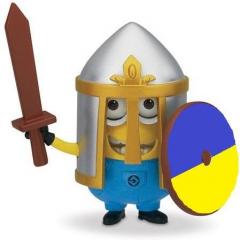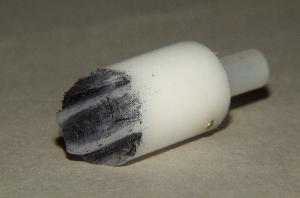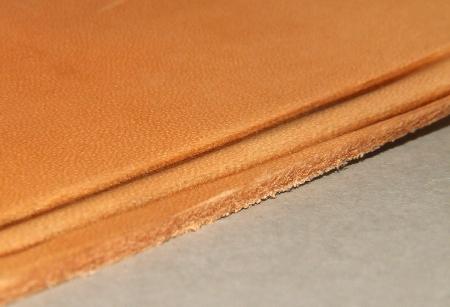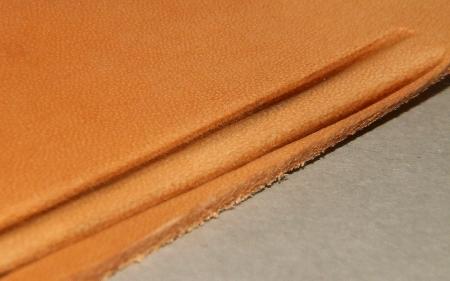-
Posts
5,932 -
Joined
Content Type
Profiles
Forums
Events
Blogs
Gallery
Everything posted by fredk
-
The posts are long stem Chicago Screws. You can get them at a supplier of Wedding photo album suppliers. Does Calumet still exist in Chicago? edit; try Calumet at 1111 N Cherry Ave, Chicago, IL 60642, . . . . or maybe not, is it closed now?
-
A basic title I've started this thread to discuss the various Rights or Freedoms we have or DO Not have in our various countries because I've noticed we all have some very different laws to follow & obey. It includes basic local or state laws we must follow, not necessarily 'rights' or 'freedoms' Lets keep basic politics out, no ranting against our local politicians. OK? And no FREE country is right or wrong. Each of our countries has developed its own set of laws and rules to suit its citizens. Sometimes the laws are wrong and need changed but mostly they work I'll start with some things but first an explanation. I live in Northern Ireland. It is not part of the independent country of Ireland but is the north east part of the island of Ireland. Northern Ireland is one of the 4 countries which make up the United Kingdom - The United Kingdoms of Great Britain (G.B.) & Northern Ireland (N.I.). Great Britain being England, Scotland and Wales. Still there? still with me? Northern Ireland is just over 100 years old and since its beginning we have had our own laws. Broadly similar to those of Great Britain but we also have many differences in the laws. Anything I write pertains to N.I. and maybe not to G.B. 1. Guns. We need a permit to have a shotgun and that permit is very hard to get. We are not allowed rifles or any sort of pistols. Only a few specialists are allowed licences for using black powder weapons, usually muskets or small cannon. Air guns; they need a permit just as the shotgun does, and about 3 years ago it was introduced, without any consultation at all, that air-soft and paint-ball guns also need a permit/licence. Hunting is highly regulated 2. Regular bows and crossbows; can only be carried covered up to and from archery clubs or shooting events. No hunting with them permitted at all 3. Sharp blade item. Not allowed to carry a knife with a blade longer than 3.5 inches, except for special reasons, eg a freelance chef can carry his/her knives in a knife roll to a cooking job, or someone going fishing can carry a 6 inch filleting knife in their tackle box. Even screwdrivers are seen as offensive weapons. Carry any size of screwdriver for no good reason and you can be arrested, obvious exceptions apply 4. Fishing. I can go sea fishing any time I like but freshwater fishing is highly regulated. We need rod licences, permits to fish certain waters at certain times, even permits on how many & what type of fish may be caught for keeping. Most fresh water fishing is catch & release. Our fishing season is much longer than in GB 5. Unlike GB our police are armed 24/7. All of them. But unlike the US they rarely use their guns. In the last 10 years the police have drawn their guns 4 times and discharged once. Use of the Taser is getting more common, used about 3 times this year. Believe me when I say, the police could and maybe should have used their guns with lethal effect more often but they don't or haven't 6. One of the reasons for starting this thread; the differences in starting a business. Here, all I had to do was, err, start, saying I was a business. That was it. A name for my business, buy product liability insurance if I want it, inform our tax office (HMR&C) of income from my sales. Our tax system is 'Pay-as-you-earn' PAYE, no annual tax returns. We each have a certain allowance we can earn before we have to pay tax. My level is about £12,500. Any income that takes me above that and I have to pay 10% tax just on that extra I didn't have to inform any local or state authority that I was now conducting business. I should tell the authority, the local housing association, that I'm in business but their attitude is, if it doesn't interfere with the neighbours or generate lots of car traffic - we don't care Generally, I do have to obey all the common laws and regulations on selling goods; ie a bit of a guarantee, not refusing to make something for someone based on their gender etc, Here the buyer is King/Queen or other, Queeng? Kineen? Quekin? 7. Other than lots of active terrorists (at the moment busy trying to kill each other) we don't have any insects, snakes, crocs or other wild animals out to kill us. Our biggest, and only, lizard is about 5 to 8mm long 8. Living here can be expensive though. Petrol (gas) or diesel is currently about £6.35 per UK gallon, I think that works out at about $6.60 per US gallon. Electricity is currently expensive. But often basic food prices are cheaper. The price you see is what you pay. We do not have any add on local, city, county, state and federal taxes. I remember being stuck in New York once. I was down to my last $10. I went into a McD. I choose 4 items and by the prices displayed it would come to just about $4.50 but when I paid it was about $9.20. The extra was all the different taxes added on! I believe rents are generally lower than GB. A person in GB has a lot more living expenses than we have so scores of them are moving here. But once you're here you're kinda stuck. Air flights can be relatively cheap but car ferries are expensive More later . . . . . ttfn
-

Been asked to make simple knife sheaths. Please help..
fredk replied to SUP's topic in Leatherwork Conversation
Back onto subject; I too have a Tippmann Boss. But I've not yet used it in anger. Two things I can't get my head around is that its a lock-stitch and uses much thinner thread than wot I use for hand sewing. I suppose the lockstitch could be ok and using the Boss would be quicker but I'm rather stupid in thinking that my hand sewing saddle stitch is superior and somehow the lockstitch with thinner thread would make my 'hand-made' items inferior and just 'not as good' However - I have some items I want to make in thick leather so I'm going 'half-way house' with the Boss. I'll use it to make the holes for me to saddle stitch. Clever, eh, ? I bet none of youse ever thought of doing that! -
Repurposing is far better than recycling Wishing you a quick eye and steady sewing on these projects
-

Been asked to make simple knife sheaths. Please help..
fredk replied to SUP's topic in Leatherwork Conversation
off track, but in the UK Amazon have been caught falsifying feedback ratings and they are now under attack to put it right. In some cases, which are known as the 'Mystery Scarf', Amazon sellers have sent out cheap scarves to unsuspecting 'buyers' on Amazon, then the seller enters a 100% or 5 star rating on behalf of the 'buyer' in order to boost their reputation. When the 'buyer' contacts Amazon about the scarf they are told it was sent to them in error and for them to just keep it Its commonly done by sellers in @Doc Reaper 's favourite country, Ch . . . . . -
Nice set of tools I have antler points which could be made into handles/grips. I must look more closely at them to do that
-

Been asked to make simple knife sheaths. Please help..
fredk replied to SUP's topic in Leatherwork Conversation
Be careful. I recently dropped a deal for cowboy holsters. The retailer want top quality holsters at a lower price he can buy poor thin leather ones from Mexico. The deal was for at least 5 holsters per month for at least 3 years. I can't even buy the decent leather for less than he is buying a cheap holster in at (eg, my good thick leather is about £5 sqft x 3 = £15 plus lining leather at £3.50 sqft = about £26, he's buying the cheap holster and a belt for £25). The retailer keeps asking when I'm going to make him some holsters and I keep telling him he can't afford my prices. He's been asking since 2017! Sometimes, after looking at a deal, ya just gotta walk away from it Hand sewing can take more time than you think. I recently sewed the perimeter of a book cover. It took 3, that's three, bluddy hours. At £10.85 (minimum wage here) that's £32.55 just to sew the edge! As this is for a friend, I'd told her £15 for the book cover. That just covers the cost of the leather (real cheap, but good, leather ) and a few fittings Also, a while back, as I was asked to do so, I used a stop watch to time every working step in making a simple coin purse. Actual working time came out at 1 hour 45 minutes, and I didn't have to dye or edge finish or anything fancy. So that was, at min/wg, £19 for something I'd sell for £3 or £5 I might do the stop-watch thing again sometime, just to see how long it takes me to make something -
For that sort of need I just use ordinary thin (black) material and glue a cut piece on
-
sheesh! your own stamp as well Sergey had better watch out when you're on the block
-
Nice, good carving
-
I used to use that, mainly for its intended use, on my vintage cars' electrics, but also as a barrier between aluminium and steel I've not seen it here, nor been able to get it, for over 25 years now
-
Nice kit, make sure all the parts are plastic bagged. Seal the bags real good. Its very easy to loose parts out of boxes
-
Thanks. I have many sets of small files, from jewellers super small to larger small files, plenty to choose from. I use them in my plastic model building
-
By what do you mean 'premium'? I use a wide range of acrylic paint makes and they all work fine
-
Very excellent What method did you use to cut / shape the round?
-
The length of the oval should be aligned with the length of the strap, not across it. Really, there is very little difference of tension on a bonnet strap, a belt or a watch strap
-
I disagree; the hole is always best to be oval. When the buckle 'prong' goes into the hole and the strap is pulled down it forces a round hole to become oval. This puts strain on the hole and becomes unsightly, but if the hole is oval to start with then this doesn't happen and the strap lies down more neatly I have, did, replace many vintage car bonnet straps because the round holes had torn the leather trying to make the holes oval. Mostly the straps were still serviceable but had to be replaced because of the mis-shapen holes and the damage around them
-
Benny Hill was a great comic of his time. We all laughed at his jokes and antics We bellowed with laughter and in this he wore Lederhosen probatur quod quaeritur
-
@MikeRock, for you
-
Well, I have a sort-of beader. It works I made the working end at a slight angle. I thought it would be easier to work Total width across is about 6.5mm (1/4 inch), with the bead about 4mm The test leather is only 2.1mm (5 oz ?) thick. The beader needs running to and back, going deeper on each run. I went as deep as I could on my test piece but I reckon I would get a better rounded bead on thicker leather I might try to make a smaller sized beader
-
In the past I bought cut straps from Le Prevo. If the thickness and width was not 'stock' they cut the straps for me, although the length was a bit more normal. I needed the straps for bonnet (hood) straps on vintage cars and the straps had to be a regulation width and thickness
-
Years ago, a friend in the medieval presentation group I was in wanted to try to make shoes. Being on a tight budget but being clever he obtained a pair of boot style shoes about one size smaller than his regular fit. Then he removed some of the insole and poured in thick cement. almost concrete. When that had set he cut away the cheap shoe, covered the cement cast with scraps of thick-ish leather, obtained from me. Extra thick layers of leather on the sole area. He made several pairs of medieval shoes on those cement/concrete lasts. His report was that the next time he would go down 2 sizes for the cast and cover the cast with strips of wood then cover that in leather. I don't know if he ever did that. Only real downside was that the cement casts were very heavy. Oh, btw, as the cement hardened he inserted an iron bar, about 12 inches long, so about 8 inches stuck out the ankle bit. With this he could hold the last in any vice of his choosing. And the cement cost him nowt as he was working on a building site and the boss allowed him to have some. After this my friend got the nickname 'the gangster' as he was making Chicago style concrete boots! I sometimes have thought of copying his idea






